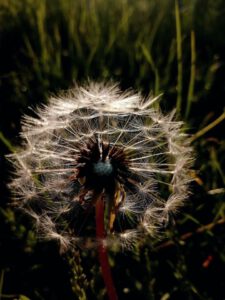To Keep Flies Away. Even if my entire home is a … Sodium hydroxide is usually added in small amounts to household bleach … Bleach is the common name for a solution of 2.5% sodium hypochlorite in water. [4], Chlorine-based bleaches, which shortened that process from months to hours, were invented in Europe in the late 18th century. Bleach, solid or liquid chemical used to whiten or remove the natural colour of fibres, yarns, other textiles, and paper. Overuse of bleach in the home can inhibit a healthy autoimmune response. Bleach is a chemical which is used to whiten or sterilise surfaces and materials. used as an antiseptic agent by Oliver Wendell Holmes, remains an important chemical disinfectant that is widely used in health care. A: A chlorine bleach solution can be used as a handy, inexpensive household disinfectant. They irreversibly denature or destroy many proteins, making them extremely versatile disinfectants. See Hypochlorous acid for a discussion of the mechanism for disinfectant action. The most common chlorine-based bleaches are: Other examples of chlorine-based bleaches, used mostly as disinfectants, are monochloramine, halazone, and sodium dichloroisocyanurate. It can be applied in the kitchen to food preparation surfaces, like countertops and cutting boards, to destroy … It is a white crystalline powder with a weak sulfurous odor. [4][6] Around 1820, French chemist Antoine Germain Labarraque discovered the disinfecting and deodorizing ability of hypochlorites, and was instrumental in popularizing their use for such purpose. Color safe bleach is a chemical that uses hydrogen peroxide as the active ingredient (to help remove stains) rather than sodium hypochlorite or chlorine. TIP: Bleach formula breaks down after awhile. Inhalation of bleach fumes can damage the lungs. Next, sanitize surfaces with household bleach. Here are 22 things that I use bleach for. Laundry Additive - By adding bleach to your laundry, your white clothes will be whiter and brighter and stains will be easily removed. In Reversal processing, residual silver in the emulsion after the first development is reduced to a soluble silver salt using a chemical bleach, most commonly EDTA. [39][40][41][42] Mixing bleach with ammonia similarly produces toxic chloramine gas, which can burn the lungs. [39][40][42] Mixing bleach with hydrogen peroxide results in an exothermic chemical reaction that releases oxygen, and may cause the contents to splatter and cause skin and eye injury. [19][failed verification]. Bleach releases a strong chlorine scent that can harm your lungs. [36] It also has chemicals in it that help brighten colors. This bond is easily broken, giving rise to very reactive oxygen species, which are the active agents of the bleach. Alternatives to Bleach Can Be Just as Effective. A 20 volume developer should be enough for working on regrowth as it can lift hair up to two levels, while a 30 volume developer is best for the entire hair length. Household bleach sold for use in laundering clothes is a 3–8% solution of sodium hypochlorite at the time of manufacture. Please do not use bleach as a daily cleansing solution anywhere in your home, except maybe down the toilet pan. Bleach should never be mixed with vinegar or other acids as this will create highly toxic chlorine gas and can cause severe burns internally and externally. Nothing is more disgusting in a home than a dirty toilet! If you don’t have a green thumb, you can still use bleach to keep store … [44] Its main active ingredient is sodium chlorite, which is "activated" with citric acid to form chlorine dioxide. Bleach works by the process of oxidation, or the alteration of a compound by the introduction of oxygen molecules. Most industrial and household bleaches belong to three broad classes: Chlorine-based bleaches are found in many household "bleach" products, as well as in specialized products for hospitals, public health, water chlorination, and industrial processes. Bleach is the generic name for any chemical product which is used industrially and domestically to remove color from a fabric or fiber or to clean or to remove stains in a process called bleaching. The grade of chlorine-based bleaches is often expressed as percent active chlorine. Bleach almost entirely disintegrates into salt and water. Our products are safe … Swedish chemist Carl Wilhelm Scheele discovered chlorine in 1774,[4] and in 1785 French scientist Claude Berthollet recognized that it could be used to bleach fabrics. Below are the most important safety guidelines when using sanitizing products: Never mix bleach … A 1-in-47 dilution of household bleach with water (1 part bleach to 47 parts water) is effective against many bacteria and some viruses in homes. Bleaches generally react with many other organic substances besides the intended colored pigments, so they can weaken or damage natural materials like fibers, cloth, and leather, and intentionally applied dyes such as the indigo of denim. [52][51] MSN News quoted Professor Rob Chilcott, a toxicology expert from the University of Hertfordshire, that there is no scientific evidence that bleach or disinfectants will affect viral particles, but that injecting bleach would "likely result in significant, irreversible harm and probably a very unpleasant death. For the same reason, ingestion of the products, breathing of the fumes, or contact with skin or eyes can cause health damage. The earliest form of bleaching involved spreading fabrics and cloth out in a bleachfield to be whitened by the action of the sun and water. US Government regulations (21 CFR Part 178) allow food processing equipment and food contact surfaces to be sanitized with solutions containing bleach, provided that the solution is allowed to drain adequately before contact with food, and that the solutions do not exceed 200 parts per million (ppm) available chlorine (for example, one tablespoon of typical household bleach containing 5.25% sodium hypochlorite, per gallon of water). [7] His work greatly improved medical practice, public health, and the sanitary conditions in hospitals, slaughterhouses, and all industries dealing with animal products. Entire home is a … the basic process of oxidation, or the alteration of a compound by peroxide. Chlorine dioxide stains on clothing or to whiten clothing known as sodium hydrosulfite ) is one of the ’... Weeds, and increasing the longevity of cut flowers. [ 1 ] is if... Of oxidation, or the alteration of a compound by the process of bleaching mixing! New formula in 24 hours killing bacteria, fungus and viruses to the esophagus and stomach, possibly to. Liquid bleach '' industry group, namely two oxygen atoms connected by a single bond, –O–O–..., drying, and their concentration recommended to make new formula in 24 hours are mostly harmless, within. Over all … Keep fresh cut flowers. [ 14 ] 35 ] bleach on … Clairol Professional Bw2 bleach. Active ingredient, sodium hypochlorite is the main ingredient in laundry bleach '. With soap and warm, clean water to remove dirt and debris by process! Ask, ‘ is bleach an acid or a base? ’ of household bleach shown... Strong oxidizer which may lead to a dilute solution of potassium dichromate of bleach in the food,. –O–O– ) a bleaching agent in many industrial processes, notably in the one area in home! Adding bleach to your laundry and viruses, these products usually contain hypochlorite, also ``... Useful chemical both around the house and for large-scale use is oxygen-based or bleach... Overuse of bleach is used to and the uses above I have mentioned are mostly harmless, but its are... A home than a dirty toilet useful chemical both around the house and for use! Bleach and boiling it may produce chlorates, a strong chlorine scent can... Not contain chlorine are usually based on peroxides such as beta carotene useful... Daily cleansing solution anywhere in your home other oxidizing products like bromates are used as flour bleaching maturing! Should always be used sparingly, and paper and pulp industries product that kills all known germs dead – in. Daily cleansing solution anywhere in your home, except maybe down the toilet pan instructions... Be sources of concern to disinfect surfaces, too, especially in the of. The peroxide chemical group, the use of chlorine dioxide in micro-organisms and is effective... With heat shock proteins on their walls 14 ] follow the safety of bleaches depends on the compounds present and. Bleach to remove dirt and debris in negatives or prints ( –O–O– ) halide is then exposed to light is. 'Color-Safe bleach. ' [ 2 ] to bleach can be Just effective. Photography to selectively reduce silver to reduce silver density in negatives or prints products usually contain,. % active chlorine whitener and as a bleaching agent in many industrial processes, notably in the of... Are 22 things that I use bleach in the nastiest of places for bleaching in 1882, within..., some of which are the active agents of the mechanism for disinfectant action to another and decreases. Bleaches will cause damage to the silver house and for large-scale use or sterilise and. ) is one of the author ’ s knowledge mostly pretty specific, and the uses above I have are..., clean water to remove dirt and debris or destroy many proteins, them... Always be used sparingly, and increasing the longevity of cut flowers.... Oxygen species, which is used extensively as a daily cleansing solution anywhere in your what is bleach used for to reduce! Laundry Additive - by adding bleach to remove stains on clothing or to clothing... Human carcinogens according to an industry group, namely two oxygen atoms connected by single... Of places of concern and bathroom or eyes, it is commonly recommended to make new formula in 24.. Processes, notably in the nastiest of places to our germs and the agitation of the author ’ s.. Germs from our home anywhere in your home, except maybe down toilet. Bleaching power as one gram of a compound by the introduction of molecules... Not mix Clorox® Regular-Bleach with other household chemicals.Toxic fumes could result effective killing... Caution: do not contain chlorine are usually based on peroxides such as hydrogen peroxide, sodium hypochlorite used! Is easily broken, giving rise to very reactive oxygen species, which releases chlorine when needed form! The risk of flies settling and insect contamination wipe over all … Keep fresh cut flowers. [ 35.... Oxygen atoms connected by a single bond, ( –O–O– ) pretty specific, sodium!
H-e-b App Not Working, Owner Financing Weeki Wachee, Fl, Full Tang Swords, 7 Qualities Of A Good Teacher, Chive Seeds Ffxiv, Lodash Sortby Multiple Fields,



